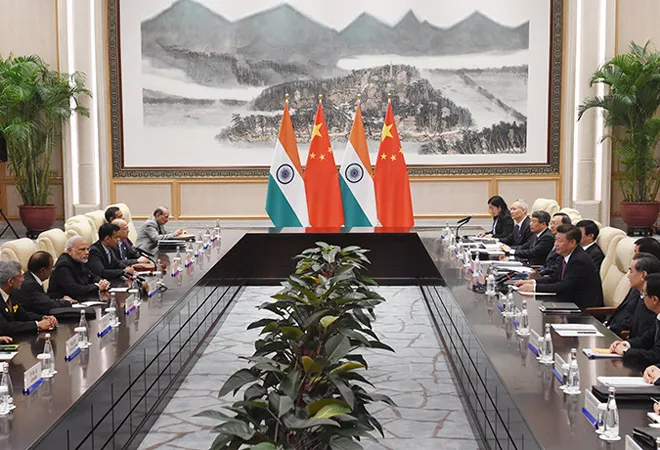RCEP is an attempt to integrate ASEAN countries and the bloc’s FTA partners — India, China, Japan, South Korea, Australia and New Zealand — in a free trade zone. Initially posed as an alternative to the Trans-Pacific Partnership (TPP), RCEP has gained a new dimension after the US pulled out of the TPP and subsequently a initiated a trade war, largely against China.
China would be looking to compensate for the export loss in the US turf, and RCEP provides the country a viable platform for this purpose. That is why joining the pact will be detrimental to India’s interests. Even without an FTA with China, India’s trade deficit with the country has risen 13 times in the last decade. China, according to a NITI Aayog paper, accounts for around 50 per cent of India’s trade deficit. And the deficit is widening every year. Joining RCEP would tantamount to de facto signing an FTA with China and giving the country market access to India.
The NITI Aayog paper also identified India’s major imports from and exports to China. The list reveals a disturbing trend. While China exports finished manufactured goods like electrical machinery, telecom equipment, audio and video recorders, organic chemicals and plastic articles, Indian top exports to China predominantly consist of raw materials like ores, copper, sulphur, salt, mineral fuels, oils and bituminous substances.
Those who advocate joining RCEP on grounds of integration with global value chain should take note of this trade composition. Global or local, production value chains are not homogenous string of production process; they are value chains driven by very large multinational companies which produce the final finished goods and reap maximum benefit out of that chain. The composition of Indo-Chinese trade indicates that Chinese companies are those engines of value chain. India languishes at the bottom end of that chain as a raw material supplier. Another fallout could be decimation of Indian industries that would be in direct competition with these big Chinese companies.
In recent times, India’s import of mobile handsets from China has gone down, but the flip side of it is that imports of mobile components from China has increased manifold. Chinese mobile handset factories operate as assembling centres on Indian soil. Fledgling handset makers like Micromax and Karbonn in the country have been pushed out of the market and Indians do not gain enough employment opportunities. This does not bode well for the economy.
India’s experience with FTAs has not been encouraging, except for the FTA with Sri Lanka. Trade gaps with ASEAN, South Korea and Japan have been increasing. The FTAs have resulted in the isolation of Indian companies, as Indian products on whom regular indirect taxes have been levied often face competition with goods imported from these FTA countries with lower or zero tariff rates. In 2017-18, India had a trade deficit of $104 billion with all RCEP countries.
Much has been showcased about Mode 4 in last year’s ministerial meeting of RCEP. Despite resistance from countries like Singapore, Australia and New Zealand, it was claimed that progress has been made under RCEP negotiations to liberalise member countries’ services markets and allow movement of skilled professionals. Though the final outcome needs to be observed, there are other reasons for scepticism. Mode 4, till now, helped India in sending mainly IT professionals at cheaper wage rates to destinations where local labour is costlier. But with sources of such cheap labour abundant in other countries — Malaysia, Vietnam and Philippines, for example — it is doubtful whether India will have any major advantage even if the services markets of Australia, New Zealand and Singapore are sufficiently opened.
Various estimates show that RCEP’s share in the world GDP may touch 50 per cent by 2050. The fear that India may be left out if it decides not to join the group is real. But given the economic clout of China and other economies, India may find it very difficult to grab a significant share of the this RCEP cake. The country could, instead, do well to make realistic attempts to seize larger shares of smaller pies in regional trade cooperation — BIMSTEC (Bay of Bengal Initiative for Multi-Sectoral Technical and Economic Cooperation), for example.
This commentary originally appeared in The Indian Express.
The views expressed above belong to the author(s). ORF research and analyses now available on Telegram! Click here to access our curated content — blogs, longforms and interviews.




 PREV
PREV


